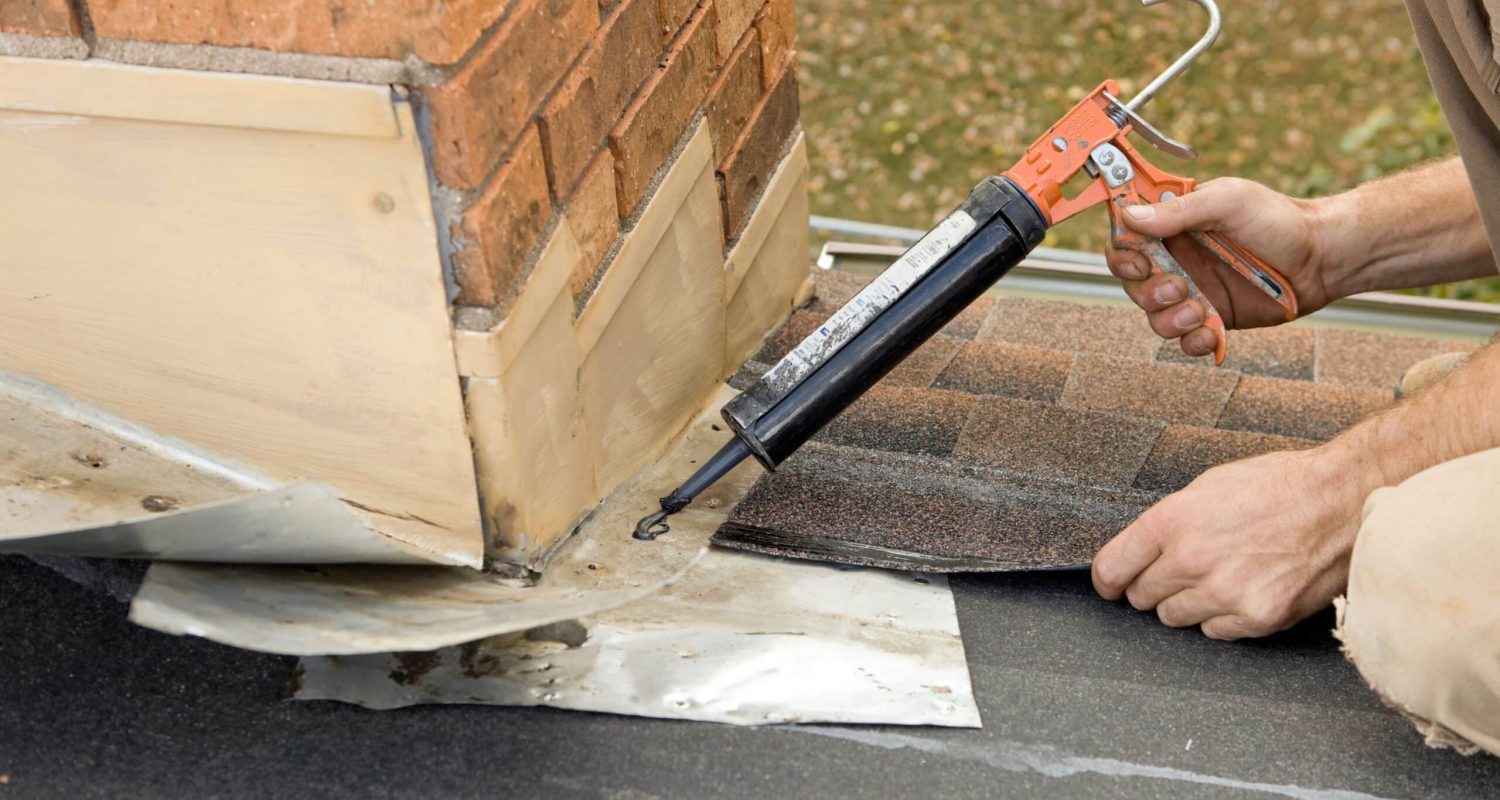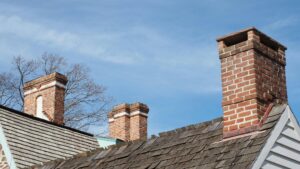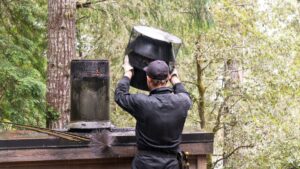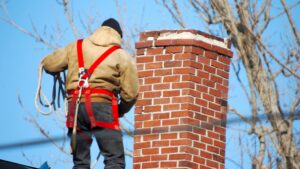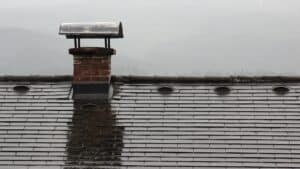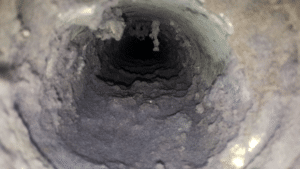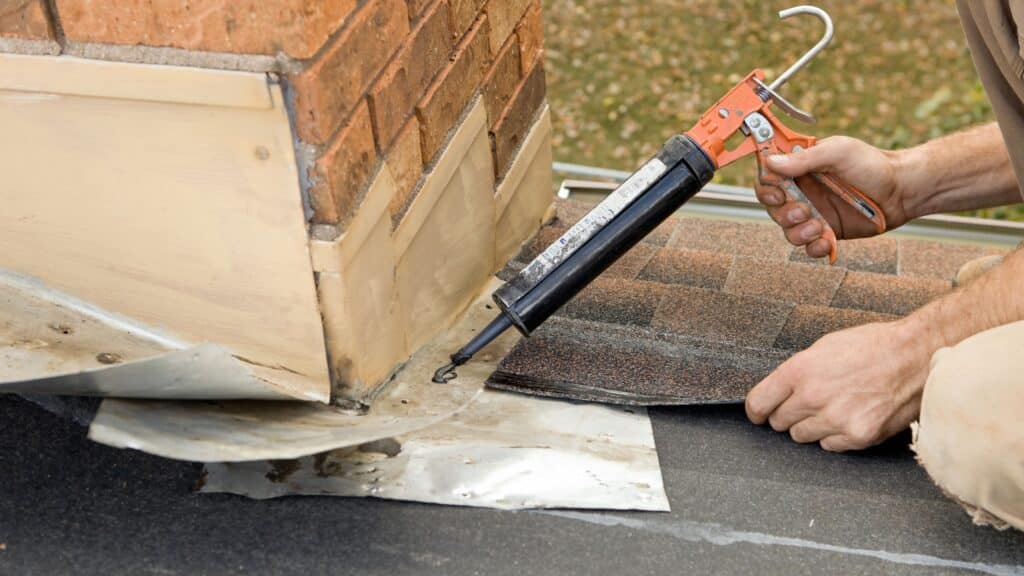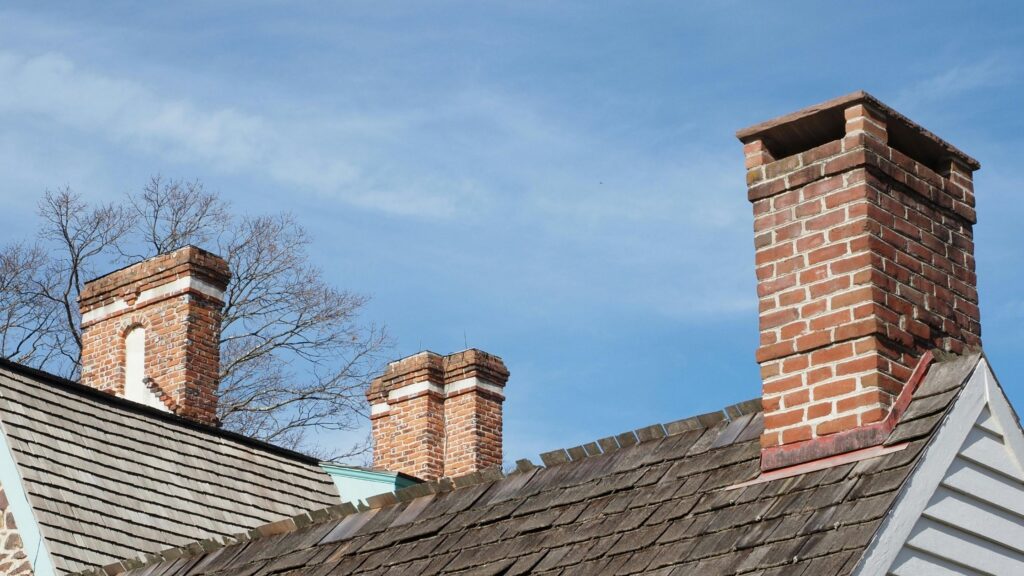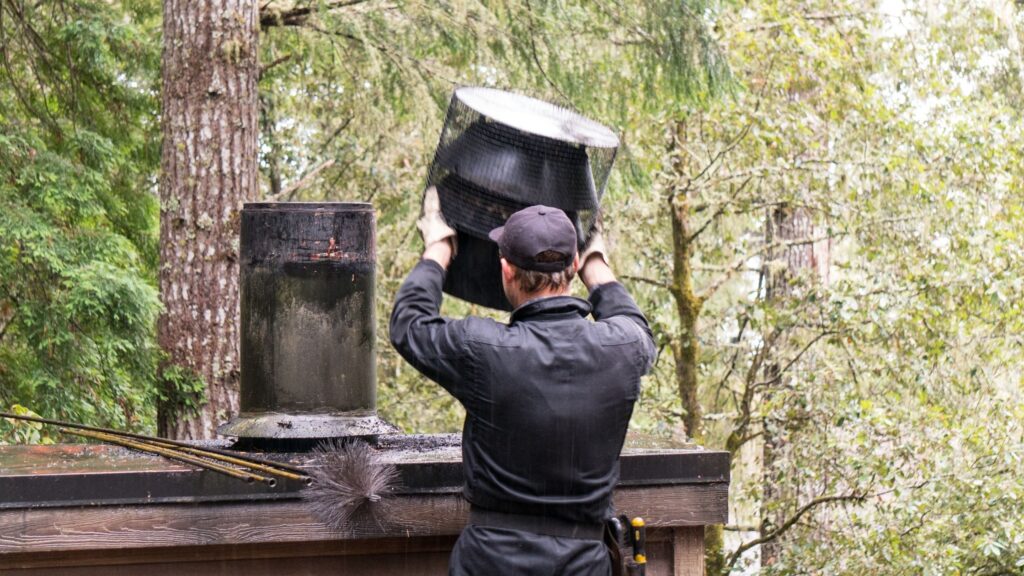If you’re dealing with a roofline leak near your chimney, the culprit is likely one of the most overlooked, but critical, components of your chimney system: the flashing. Chimney flashing plays a crucial role in keeping water out of your home. When it fails, even a small rainstorm can lead to interior leaks, water stains, and structural damage.
In this article, we’ll break down what chimney flashing is, why it fails, and how professional flashing repair or replacement from True Ventilation can protect your Catskill home from costly water intrusion.
What Is Chimney Flashing?
Chimney flashing is the sheet metal, usually aluminum, galvanized steel, or copper, installed where the chimney meets the roof. Its job is to create a watertight seal and prevent water from entering the home at the roofline.
- Step flashing: L-shaped pieces fitted under shingles along the chimney base.
- Counter flashing: Installed into mortar joints and overlaps the step flashing for a sealed finish.
- Cricket (if needed): A peaked deflector behind wide chimneys to divert water runoff.
What Causes Flashing to Fail?
Flashing can fail due to a variety of reasons, especially in Catskill’s seasonal climate:
- Weathering and Age: Exposure to sun, rain, and snow can deteriorate flashing and dry out sealants.
- High Winds: Storms may loosen or lift flashing over time.
- Chimney Movement: Chimneys can shift or settle, pulling flashing away from its seal.
- Poor Installation: Incorrect installation is a common reason for leaks at the roofline.
- Animal Damage: Birds, squirrels, or raccoons may damage flashing trying to nest or enter the attic.
Signs Your Chimney Flashing Needs Repair
Look for these symptoms of flashing failure:
- Water stains or peeling paint near the chimney
- Musty smells in the attic or upper floors
- Rust streaks on the exterior chimney or roofline
- Visible gaps or lifted flashing at the roofline
- Dripping sounds near the fireplace during rain
If your roof appears intact but water damage is present near the chimney, faulty flashing is a likely cause.
Chimney Flashing Repair Options
True Ventilation offers several repair solutions depending on the damage:
1. Flashing Sealant Application
Ideal for minor cracks or gaps, this involves sealing vulnerable areas with a waterproof material to restore protection.
2. Partial Flashing Replacement
For localized damage, we remove and replace only the affected sections while maintaining the integrity of the existing system.
3. Full Flashing Replacement
Used when flashing is corroded, poorly installed, or extensively damaged. A complete new flashing system is installed.
Optional: Chimney Cricket Installation
We recommend a chimney cricket for wide chimneys to help direct water away from the back of the chimney and prevent pooling.
Combine Flashing Repair with Waterproofing
To maximize leak protection, combine flashing repair with chimney waterproofing services. This creates a complete barrier against moisture intrusion.
- Prevents both roofline and masonry leaks
- Reduces risk of water damage inside your home
- Extends the lifespan of your chimney structure
Why Choose True Ventilation for Chimney Flashing Repair in Catskill?
True Ventilation is a trusted name in the Hudson Valley for chimney inspection, maintenance, and leak prevention.
- Licensed, experienced chimney technicians
- Reliable flashing repairs using high-quality materials
- Chimney waterproofing, crown repair, and cap installation available
- Clear estimates and no surprise costs
Call us or contact us online to schedule your chimney flashing repair today.
Conclusion
Chimney leaks don’t always start from the top. Many begin at the roofline due to failing flashing. Ignoring the signs can lead to serious interior damage and costly repairs. If you see water stains, rust, or loose metal around your chimney, it’s time to act.
For expert chimney flashing repair in Catskill, True Ventilation has you covered. Keep your home dry and protected no matter the season.
People Also Ask
- How long does chimney flashing last? With proper installation and maintenance, flashing can last 20 to 30 years. Weather and material type may affect this lifespan.
- Can I reseal chimney flashing myself? While minor sealing is possible as a temporary fix, professional repairs ensure lasting, weatherproof protection.
- How much does chimney flashing repair cost? Costs vary based on damage and material, but early repairs are always more affordable than water damage restoration.
- What is the best material for chimney flashing? Copper and stainless steel offer durability and long-term resistance to corrosion and weathering.



